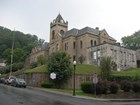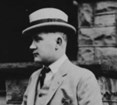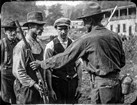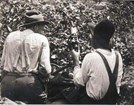The West Virginia Mine Wars were a series of labor struggles in the 1900s that saw coal miners of West Virginia fight for their right to unionize. The Mine Wars ended after the treason trials at the Jefferson County Courthouse. The National Historic Landmarks program created this article series in partnership with the Organization of American Historians as part of a NHL study on the Jefferson County Courthouse. All articles were prepared by Dr. Rachel Donaldson, a co-author of the NHL study.
-
Article 1: Introduction to the West Virginia Mine Wars

The West Virginia mine wars were a series of violent labor uprisings that raged throughout the southern coalfields of West Virginia in the early 1900s. Throughout the conflict, thousands of miners organized into labor unions to fight back against the oppressive policies of coal company operators. Read on to discover the amazing history of the West Virginia mine wars and their impact on American labor rights! Read more
-
Article 2: Paint Creek and Cabin Creek Strikes

The Paint Creek-Cabin Creek strike of 1912-13 was one of the most violent and destructive episodes of the West Virginia mine wars. Read on to learn about how unionized and independent miners struggled against coal company operators in southern West Virginia! Read more
-
Article 3: Mother Jones

Mary "Mother" Jones had a long career of supporting labor movements across the United States. In the early 1900s, Mother Jones fought for the labor rights of unionized coal miners in the coalfields of West Virginia and participated in the Paint Creek-Cabin Creek strikes of 1912-1913. For her role in the West Virginia mine wars, Mother Jones was briefly imprisoned. Read more
-
Article 4: Matewan Massacre
The violence that erupted in the small West Virginia coal town of Matewan between local lawmen and mine guards was a rallying point in the West Virginia mine wars. Immortalized in film and cultural memory, the deadly shootout at Matewan triggered a series of events that sparked labor unrest throughout the state in the early 1920s. Read more
-
Article 5: Major Labor Figures of the West Virginia Mine Wars

Who were the leaders of the West Virginia mine wars? What was the United Mine Workers of American and who were its leaders? Read here to discover the major players of the West Virginia mine wars and how they impacted the American labor movement! Read more
-
Article 6: McDowell County Courthouse

The shootout at the McDowell County Courthouse in August of 1921 was one of the most violent and shocking episodes of the West Virginia mine wars and resulted in the murder of lawmen Sid Hatfield and Ed Chambers by members of the Baldwin-Felts Detective Agency. The murders at the courthouse sent a shockwave throughout the state and intensified the already dangerous situation in the coalfields of southwestern West Virginia. Read more
-
Article 7: The March on Logan County

The March on Logan County from Marmet, West Virginia in August of 1921 set the stage for the Battle of Blair Mountain and the eventual treason trials at the Jefferson County Courthouse. Read about the beginning of the fateful chain of events that would send shockwaves throughout the nation. Read more
-
Article 8: Sheriff Don Chafin

Don Chafin served as the sheriff of Logan County, West Virginia during the series of labor disputes known as the West Virginia mine wars. Chafin played a major role in the Battle of Blair Mountain in 1920 after he organized a citizen army to repulse striking miners from marching on Logan County. Read more
-
Article 9: The Battle of Blair Mountain

The Battle of Blair Mountain was the bloody climax of the West Virginia mine wars in the early 1920s. In August of 1921, striking coal miners marched on Logan County in an effort to free their companions imprisoned by Logan's notorious Sheriff, Don Chafin. Before they could reach Logan, the miners battled Chafin's citizen army on a ridgeline called Blair Mountain. Read on to discover the amazing history of the West Virginia mine wars' violent climax. Read more
-
Article 10: Jefferson County Courthouse Treason Trials

In the aftermath of the Battle of Blair Mountain, charges of treason were brought against the United Mine Workers of America organizers of the March on Logan County. From 1921 to 1922, several union organizers were put on highly public trials which brought national attention to the fight for labor rights in the West Virginia coalfields. Read more
-
Article 11: Resources on the West Virginia Mine Wars

Source list for the research and information presented in the West Virginia Mine Wars article series. Read more

